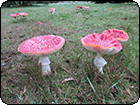 photo by splunge
photo by splunge
 photo by TheophileEscargot
photo by TheophileEscargot
 photo by Kronos_to_Earth
photo by Kronos_to_Earth
 photo by ethylene
photo by ethylene
Comment Feed:
♦ RSS
Heat pumps are more popular in milder winter climates where the temperature is frequently in the range of 40-55°F (4-13°C), because heat pumps become inefficient in more extreme cold. This is due to the problem of the outdoor unit's coil forming ice, which blocks air flow over the coil. To compensate for this, the heat pump system must temporarily switch back into the regular air conditioning mode to switch the outdoor evaporator coil back to being the condensor coil so that it can heat up and de-ice.